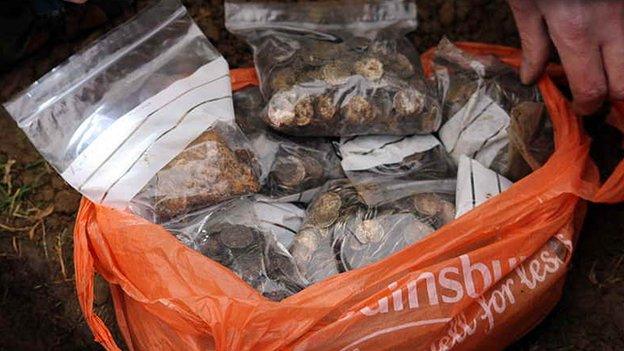Medieval emerald ring found near Rowsham is treasure
- Published
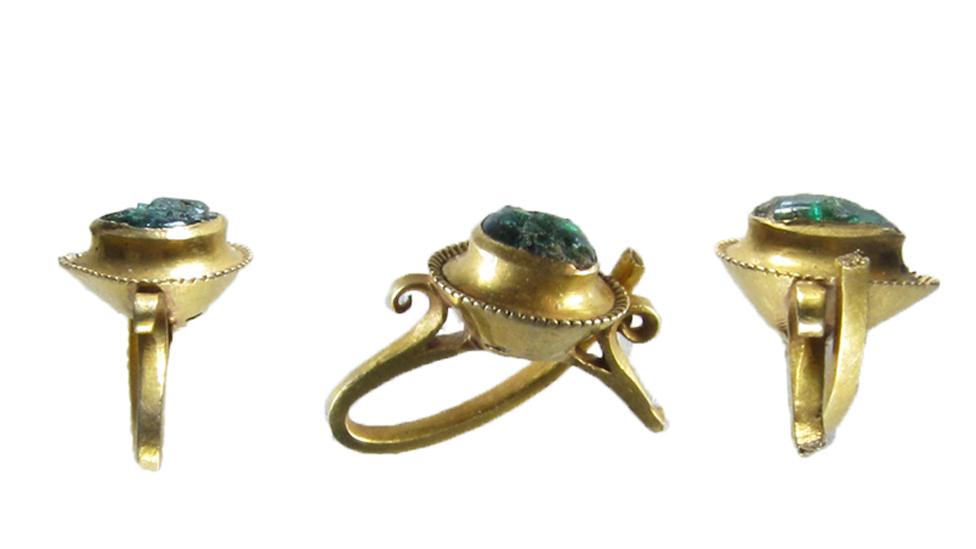
The ring, which has a rough circumference of 10mm (0.3in), is believed to date to between 1200 and 1450
A medieval gold and emerald ring found by a detectorist would have been owned by a "significant, wealthy individual".
It was discovered on 13 January 2018 close to the hamlet of Rowsham, near Wingrave in Buckinghamshire, and has been declared as treasure.
Finds liaison officer Sophie Flynn said it was "particularly interesting" because of its "curled shoulders", not known in other rings of the same era.
A Buckinghamshire museum is hoping to add the ring to its collection.
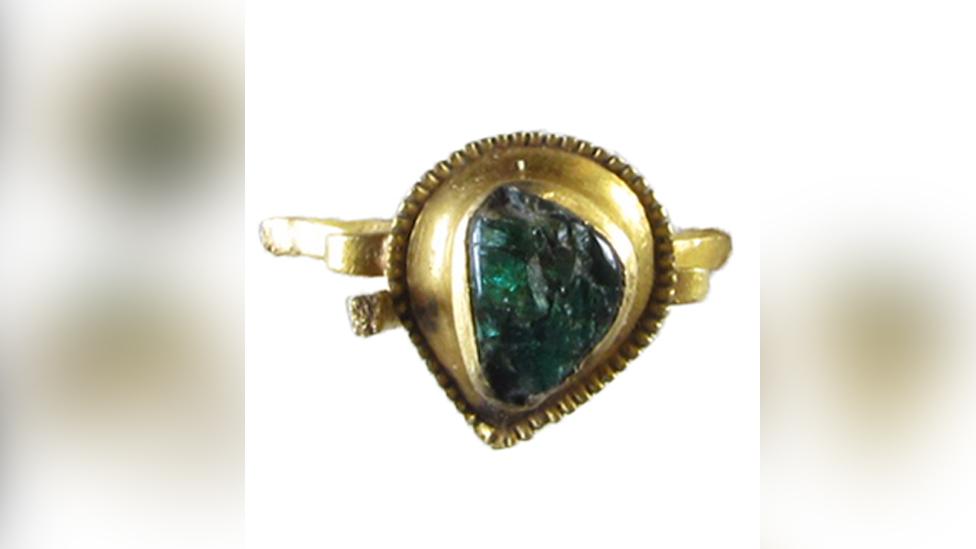
The uncut emerald has been damaged at some point over the centuries
Ms Flynn dated the ring to about 1200 to 1450 because of its bezel setting - which is shaped around the gem - known as a "pie dish" shaped bezel cup.
She said: "The emerald setting, though now broken, would have been polished and uncut.
"Gems were often uncut in medieval times because the belief was that the natural form of the stones was the most perfect, being that they were made that way by God."
The gold ring with its teardrop-shaped stone was "almost certainly owned and worn by a significant, wealthy individual", Ms Flynn added.
Under the Treasure Act 1996, finders of potential treasure in England, Wales and Northern Ireland are legally obliged to notify their local coroner.
The ring was discovered by a metal detectorist from Essex, who reported it to their local finds liaison officer Ms Flynn.
She said: "Finders can report their artefacts to any of the finds liaison officers, as it makes it easier for them to bring them in for recording."
- Published10 June 2019
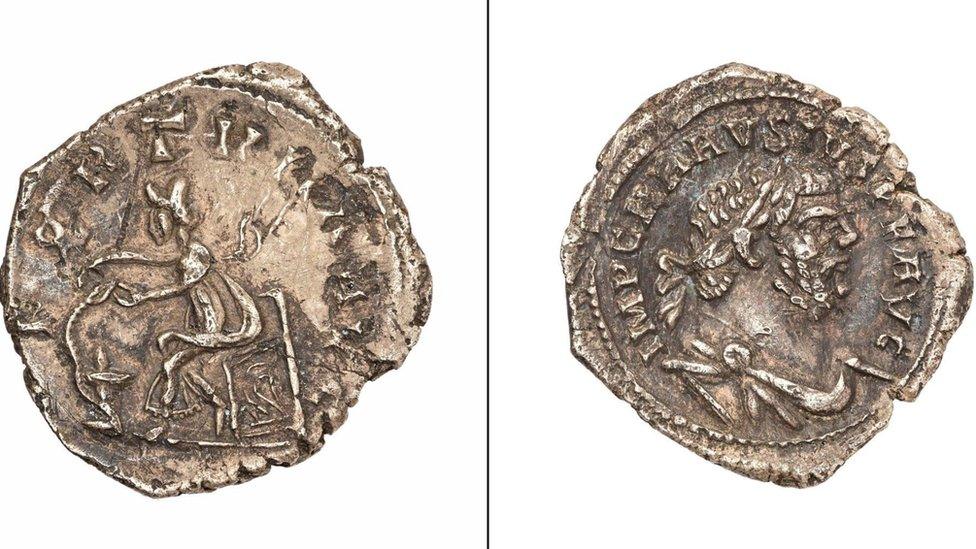
- Published23 November 2017
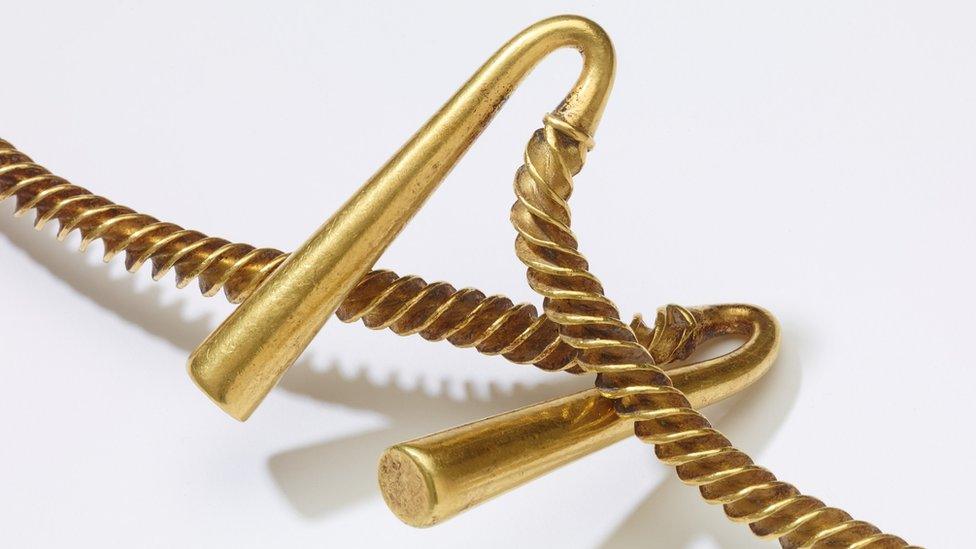
- Published28 October 2017
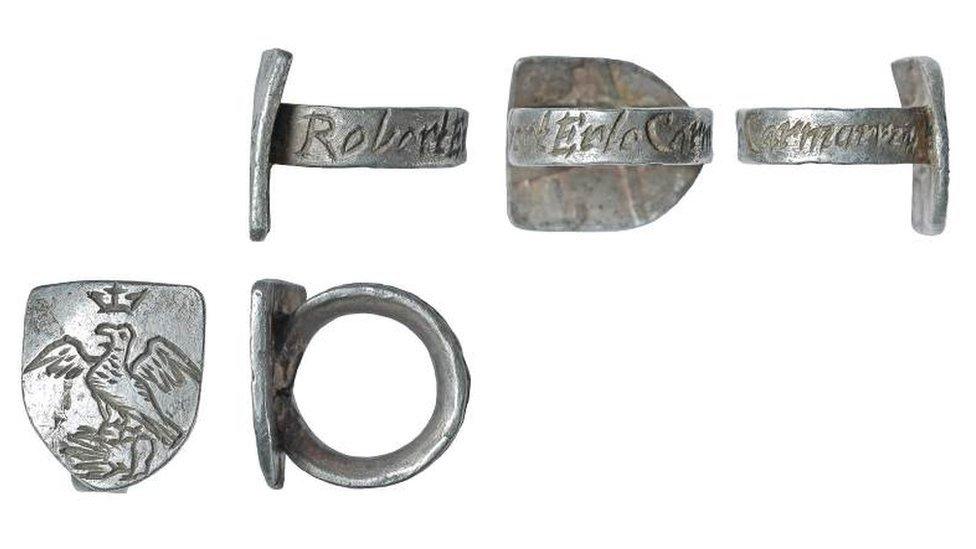
- Published2 January 2015
